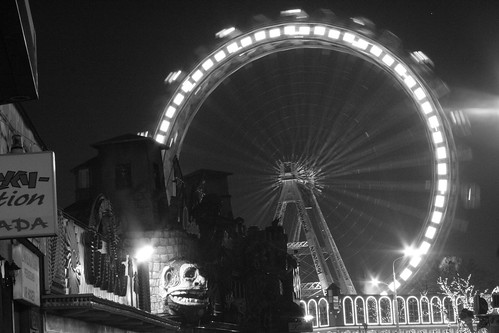This post is part of my paper ‘The Evolving Role of Creativity in Brand Management’. You can see the other posts and the table of contents here.
“Although brand may be as important as ever to consumers, brand management may be more difficult than ever.” (Keller 1998, p.30)
The topic of challenges, changes in the environment or otherwise relevant external pressures on brand management is not exactly a new one, as previous research shows (Shocker et al. 1994). If a brand is seen as the structurally coupling link between an organisation and its environment, changes in this environment are and have always been of essential importance to brand management. The following paragraphs do not aim at painting a complete picture of every trend that brand management has to deal with presently, but rather serve to give an introduction into the contemporary environment.
Keller (1998, p.31) lists 13 challenges without any inherent structure as important to brand builders:
“savvy customers, more complex brand families and portfolios, maturing markets, more sophisticated and increasing competition, difficulty in differentiating, decreasing brand loyalty in many categories, growth of own labels, increasing trade power, fragmenting media coverage, erosion of effectiveness of traditional media, emerging communication options, increasing promotional expenditures, decreasing advertising expenditures, increasing cost of product introduction and support, short-term performance orientation [and] increasing job turnover.”
Strebinger (2010) divides reasons why brand management has become much more challenging into four demand-side and supply-side drivers. On the demand side, consumers more and more demand products tailored to their special needs and preferences. Technology is bringing fundamental changes to the way people consume media (Wilbur 2008) and information overload restricts the amount of brands people are able and willing to think of. Last but not least consumers have become more critical of the behaviour of brands (Klein 1999). On the supply side, shareholders strive to maximize profits by exploiting market opportunities while focusing on cost efficiency. In addition, mergers and acquisitions challenge established brand portfolios, internationalization leads to new competitors and opportunities and new media leads to new online competitors.
Another structure (Fuchs & Unger 2007, p.2ff) suggests economic, social, legal and communicational changes. Fuchs and Unger identify increased dynamism and complexity, competitive pressure, internationalization, quality parity, the shortening of product-life-cycles and market differentiation as economic developments which all lead to competition through communication, which in combination with a dynamic media landscape leads to increased information overflow. In addition, changes in consumer values and expectations of corporate citizenship represent the most pressing socio-cultural developments.
Siegert and Brecheis (2005, p.76ff) provide more detail on the advertising and media side with their six developments that together portray the current framework advertising has to operate in. According to them, advertising has to deal with internationalization and globalization, digitalization and new information and communication technologies, individualization and experience seeking, promulgation through the mass media and the attention economy, economization and changing markets as well as changing legal frameworks.
Certainly, more challenges and trends that increase the pressure on marketing and brand management could be found. Depending on who one chooses to read, we live in a risk society (Beck 1992), a experience seeking society (Schulze 2005), an information- and media society (Siegert & Brecheis 2005), in a converging culture (Jenkins 2006) and/or in the communication age (Tropp 2004).
In this context, Kotler & Caslione (xii 2009) postulate
“[…] that turbulence, and especially heightened turbulence, with its consequent chaos, risk and uncertainty, is now the normal condition of industries, markets, and companies.”
While Feldwick (2010) doubts the emergence of a genuinely “new” consumer there is a recurring theme around the topic that brands and brand management are under pressure. As Keller called it, managerial practice in the field is becoming “more difficult than ever” (Keller 1998, p.30).
In light of the all the trends, drivers and environmental challenges, Tropp argues that there is lack of a consistent theoretical grounding to be actually give a brand manager a handle on the world he/she is operating in. Consequently, Tropp aims for a ‘lower resolution’ of observation to integrate the different empirically observable phenomena into theoretically grounded categories (Tropp 2004, p.56). These three categories are complexity, coupling and communication, all of which are central terms of systems theory. – The challenges according to these theoretical concepts will be introduced in the next three blog posts.
—
Beck, U., 1992. Risk society: Towards a new modernity, Sage publications ltd.
Feldwick, P., 2010. The Feldwick Factor: Has digital growth changed consumer-brand relationships? Admap.
Jenkins, H., 2006. Convergence Culture: Where Old and New Media Collide illustrated edition., New York Univ Pr.
Keller, K.L., 1998. Strategic brand management: building, measuring and managing brand equity, Prentice Hall.
Klein, N., 1999. No Logo: no space, no choice, no jobs ; taking aim at the brand bullies, New York, NY: Picador.
Kotler, P. & Caslione, J.A., 2009. Chaotics: The Business of Managing and Marketing in the Age of Turbulence, Mcgraw-Hill Professional.
Schulze, G., 2005. Die Erlebnisgesellschaft: Kultursoziologie der Gegenwart, Campus Verlag.
Shocker, A.D., Srivastava, R.K. & Ruekert, R.W., 1994. Challenges and opportunities facing brand management: an introduction to the special issue. Journal of Marketing Research, 31(2), pp.149–158.
Siegert, G. & Brecheis, D., 2005. Werbung in der Medien- und Informationsgesellschaft: Eine kommunikationswissenschaftliche Einführung 1st ed., VS Verlag für Sozialwissenschaften.
Strebinger, A., 2010. Markenmanagement – Lecture at WU Wien.
Tropp, J., 2004. Markenmanagement: Der Brand Management Navigator. Markenführung im Kommunikationszeitalter, VS Verlag.
Wilbur, K.C., 2008. How the digital video recorder (DVR) changes traditional television advertising. Journal of Advertising, 37(1), pp.143–149.


